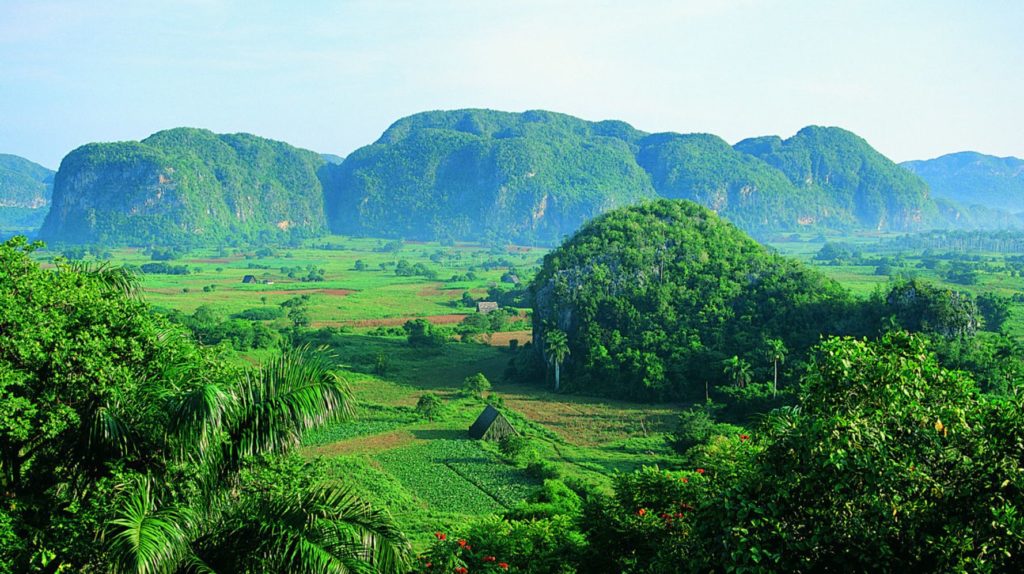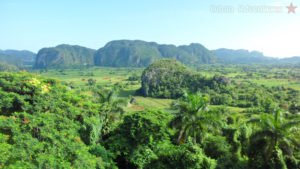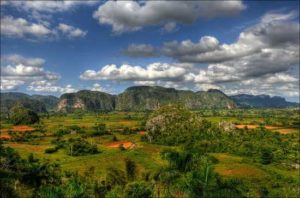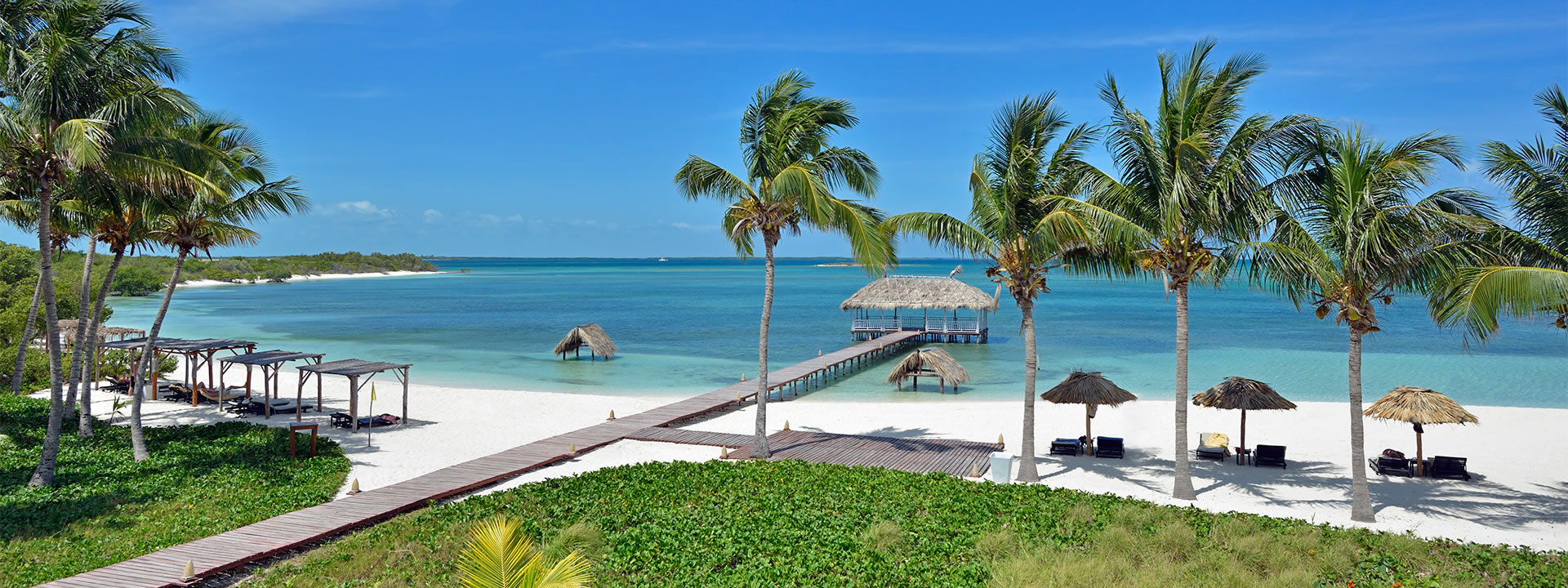 EL VALLE DE VIÑALES, PINAR DEL RIO, CUBA, PATRIMONIO NATURAL DE LA HUMANIDAD (UNESCO).
EL VALLE DE VIÑALES, PINAR DEL RIO, CUBA, PATRIMONIO NATURAL DE LA HUMANIDAD (UNESCO).
El Valle de Viñales es un lugar geográfico ubicado en la provincia de Pinar del Río, la zona occidental de Cuba. Se localiza en la Sierra de los Órganos, en la parte más occidental de la Cordillera de Guaniguanico. Este valle y gran parte de la sierra que lo rodea es aprobado en 1999 como uno de los Parques Nacionales de Cuba y en diciembre de ese mismo año fue declarado Patrimonio Natural de la Humanidad por la Unesco.
Se encuentra en el municipio de Viñales, que es uno de los once municipios con los que cuenta la provincia de Pinar del Río, concretamente en el centro del municipio, situado a 178 km de La Habana y a 25 km de Pinar del Río.
El viajero que llega al valle desde La Habana va disfrutando del cambio de tonos del verde cubano, con cambios a medida que avanza siendo muy sobrecogedor. La complicidad entre la naturaleza y el silencio hace que el visitante se sienta dueño de una belleza natural majestuosa. Desde la Cueva del Indio con su río subterráneo, hasta el Mural de la Prehistoria, el Rancho San Vicente y el fabuloso Mirador de Los Jazmines.
Existen unas formaciones montañosas, únicas en la isla, llamadas mogotes. Estos mogotes constituyen formaciones geomorfológicas muy singulares donde algunos de ellos llegan a ser de gran altura. Los cuales semejan una gran diversidad de formas, pues solo son comparables con las localizadas en China y la península de Malaca.
En el valle existen otras elevaciones, como alturas de pizarras, las cuales están constituidas por una variedad de rocas de las más antiguas existentes a lo largo del país y del área caribeña.
En el valle del llamado de las Dos Hermanas podemos encontrar el Mural de la Prehistoria, que está pintado en una de las elevaciones de piedra. Este mural muestra la evolución de la vida en un sentido natural.
El Mural de la Prehistoria está ubicado en el mogote llamado Pita. Se puede encontrar en una ladera perpendicular, la cual se limpió previamente para poder realizar este trabajo. La roca fue lavada y también se hicieron drenajes en ella para evitar en un futuro la erosión a causa de la lluvia. Se extiende a lo largo del valle por 120 y los 160 metros de longitud y su autor fue Leovigildo González Morillo, ya fallecido, el cual fue Director de Cartografía de la Academia de Ciencias de Cuba.
En él están representados los indios guanahatabeyes, también especies de mamíferos, animales gigantescos, así como algunos moluscos.
En el mural se pueden ver, en doce piezas, el proceso evolutivo de los hombres y de los animales en la Sierra de los Órganos, en sus distintas etapas. Como rasgo peculiar destaca que, para pintar o retocar la pintura ya existente en él, abarca todo un proceso complicado y riesgoso, que toma cinco años en concluir. Se retoca en su totalidad con pincel.
En el valle se pueden encontrar varias cuevas, algunas llegan a alcanzar los 300 metros de extensión, y en su interior corre un río subterráneo. Es una de las principales atracciones de Viñales, localizada a 4 km de este por la carretera que conecta con Puerto Esperanza. Son muy significativas en cuanto a forma y originalidad. También está la denominada «La reina de las espeluncas», la Caverna de Santo Tomás, caracterizada y topografiada por el Dr. Antonio Núñez Jiménez. Las cuevas son un lugar obscuro ya que están en lo subterráneo.
Se clasifica en una evolución atípica, muy variada en términos de especies con características de reliquias del pasado. Existen en el valle alrededor de diecisiete especies botánicas endémicas que no se encuentran en otro lugar del mundo.
El poblado de Viñales, ubicado en el valle, conserva el tradicional escenario de un asentamiento de agricultores, representado por su calle principal, galerías de columnas a sus lados y casas de tejas rojas que favorecen sus condiciones climáticas, dándole una apariencia singular y agradable. En el Jurásico este territorio estuvo compuesto por mar, deltas y llanuras del desaparecido continente, teniendo como elementos básicos de la geología local las piedras calizas. Se han encontrado abundantes fósiles de amonites, peces, así como restos del dinosaurio terrestre Diplodocus y del reptil marino Ichthyosaurus.
A este valle se le concedió la condición de Monumento Nacional, y la Unesco le otorgó también la categoría de Paisaje Cultural de la Humanidad.
 THE VIÑALES VALLEY, PINAR DEL RIO, CUBA, NATURAL HERITAGE OF HUMANITY (UNESCO).
THE VIÑALES VALLEY, PINAR DEL RIO, CUBA, NATURAL HERITAGE OF HUMANITY (UNESCO).
The Viñales Valley is a geographical place located in the province of Pinar del Río, the western part of Cuba. It is located in the Sierra de Los Órganos, in the westernmost part of the Guaniguanico Mountain Range. This valley and a large part of the surrounding mountains is approved in 1999 as one of the National Parks of Cuba and in December of that same year, it was declared a World Heritage Site by Unesco.
It is located in the municipality of Viñales, which is one of eleven municipalities with the province of Pinar del Río, specifically in the center of the municipality, located 178 km from Havana and 25 km from Pinar del Río.
The traveler who arrives in the valley from Havana is enjoying the change of tones of the Cuban green, with changes as it progresses being very overwhelming. The complicity between nature and silence makes the visitor feel the owner of majestic natural beauty. From the Cueva del Indio with its underground river to the Mural of Prehistory, Rancho San Vicente and the fabulous Mirador de Los Jazmines.
There are some mountainous formations, unique on the island, called mogotes. These mogotes constitute very unique geomorphological formations where some of them become of great height. Which resemble a great diversity of forms, since they are only comparable with those located in China and the Malacca peninsula.
In the valley, there are other elevations, such as slate heights, which are constituted by a variety of rocks of the oldest existing throughout the country and the Caribbean area.
In the valley of the call of the Two Sisters, we can find the Mural of Prehistory, which is painted in one of the stone elevations. This mural shows the evolution of life in a natural sense.
The Mural of Prehistory is located in the mogote called Pita. It can be found on a perpendicular slope, which was previously cleaned to perform this work. The rock was washed and drains were also made in it to prevent erosion due to rain in the future. It extends along the valley for 120 and 160 meters in length and its author was Leovigildo González Morillo, now deceased, who was Director of Cartography of the Academy of Sciences of Cuba.
In it are represented the Guanahatabeyes Indians, also species of mammals, gigantic animals, as well as some mollusks.
In the mural, you can see, in twelve pieces, the evolutionary process of men and animals in the Sierra de Los Órganos, in its different stages. As a peculiar feature, it stands out that, to paint or touch up the paint already in it, it covers a whole complicated and risky process, which takes five years to complete. It is completely retouched with a brush.
In the valley you can find several caves, some reach 300 meters in length, and inside it runs an underground river. It is one of the main attractions of Viñales, located 4 km east by the road that connects with Puerto Esperanza. They are very significant in terms of form and originality. There is also the so-called «Queen of the spelunks», the Cavern of Santo Tomás, characterized and surveyed by Dr. Antonio Núñez Jiménez. The caves are a dark place since they are underground.
It is classified in an atypical evolution, very varied in terms of species with characteristics of relics of the past. There are around seventeen endemic botanical species in the valley that are not found anywhere else in the world.
The town of Viñales, located in the valley, preserves the traditional setting of a farmers’ settlement, represented by its main street, column galleries on its sides and red-tiled houses that favor its climatic conditions, giving it a unique and pleasant appearance. In the Jurassic, this territory was composed of sea, deltas, and plains of the disappeared continent, having limestone stones as basic elements of the local geology. Abundant fossils of ammonites, fish, as well as remains of the Diplodocus terrestrial dinosaur and the marine reptile Ichthyosaurus, have been found.
This valley was granted the status of a National Monument, and Unesco also granted it the category of Cultural Landscape of Humanity.
Agencies/ Wiki/ Internet Photos/ Arnoldo Varona/ www.TheCubanHistory.com
THE CUBAN HISTORY, HOLLYWOOD.













